Let’s clear something up – carbs are not the enemy. It’s about knowing when and how to incorporate them into your day to fuel your body and support your energy levels. Whether you’re dealing with brain fog, fatigue, or simply want to feel better in your skin, balancing your carb intake is key.

I wanted to come up with this list today as one of my clients is now focusing on getting her “good carbs” in and making sure it won’t spike up her blood sugar levels.
So let’s dive in and get the scoop on both complex and simple carbs…arguably known as the good carb – bad carb.
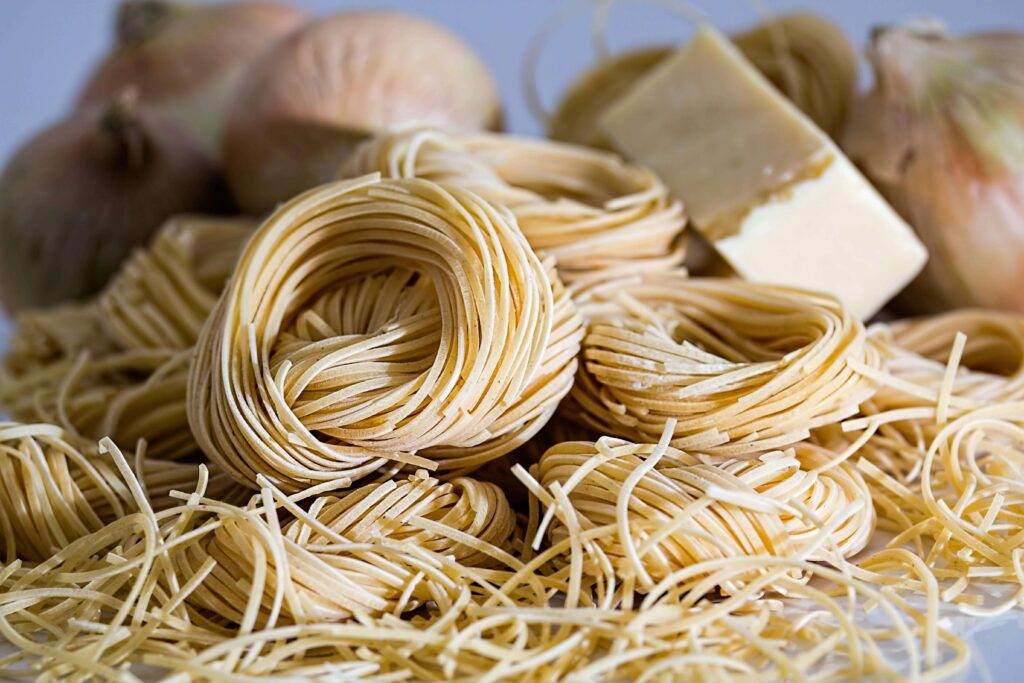
Simple Carbohydrates: What They Are and When to Use Them
Simple carbs are fast-digesting sugars that can give you quick energy, but they also tend to cause blood sugar spikes and crashes. These are typically found in:
• Candy
• Soda
• Pastries and desserts
• White bread and pasta
• Sugary cereals

Now, while it’s tempting to think simple carbs should be off-limits, that’s not the case. It’s all about balance. So yes, my fellow croissant lovers. This is still a go for us. But not to replace your daily nutritious meals.
Remember our 80-20 rule. This is still not license to replace your sweet potatoes for pastries.
Before a workout:
If you need a quick burst of energy, a small amount of simple carbs paired with some protein can help power you through. Think of it like topping off your fuel tank.
After an intense workout:
Your muscles need fast energy to recover, so pairing simple carbs with protein (like a banana with nut butter or a handful of berries) can help replenish glycogen stores without overdoing it.
Focus on whole food sources of carbs when possible, like:
• Fresh fruit (apples, bananas, berries…while these can be considered simple carbs — they do have natural sugars and fiber so they still have nutritional benefits)
• Dairy (milk, yogurt)
These provide natural sugars and come with added nutrients like fiber, which helps keep you fuller for longer.
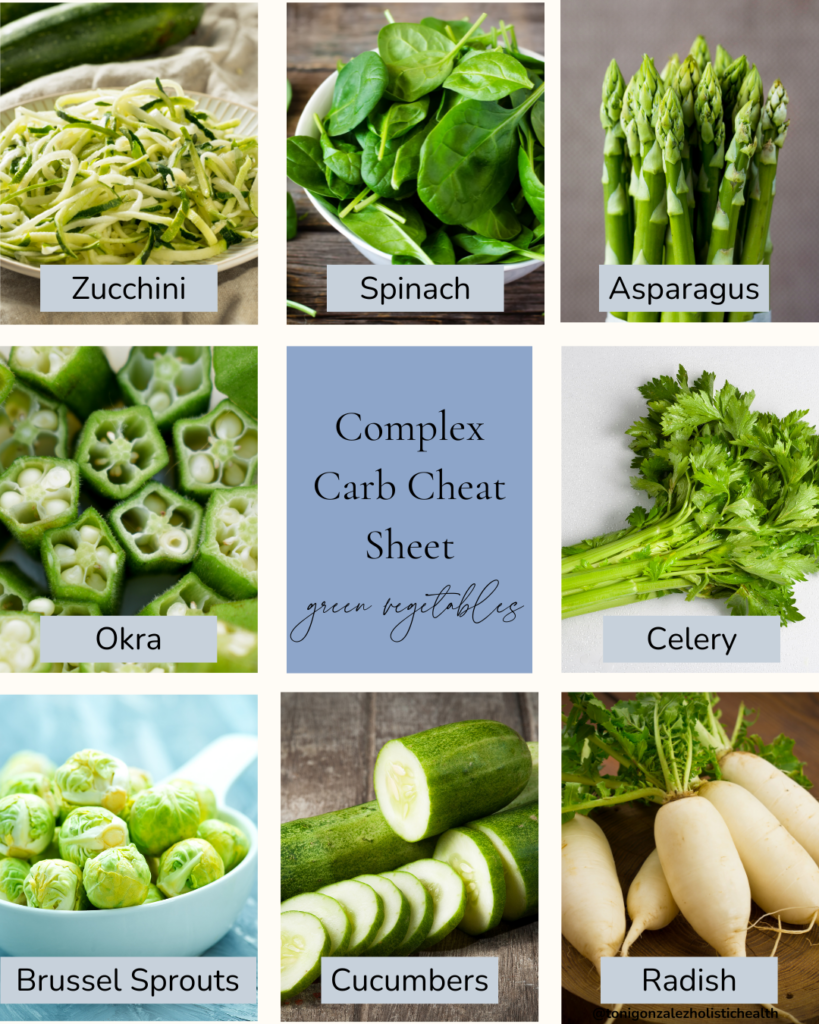
Complex Carbohydrates: Why They Should Be Your Go-To
Complex carbs take longer to digest, which means they provide steady, long-lasting energy and don’t cause those same blood sugar spikes. This makes them ideal for most meals and snacks, especially for women dealing with midlife hormone fluctuations. Complex carbs include:
• Whole grains (quinoa, brown rice, farro, oats, high fiber cereals, whole wheat couscous)
• Legumes (beans like kidney or black, lentils, chickpeas)
• Vegetables (sweet potatoes, beets, squash, pumpkin, carrots, zucchini, bell peppers)
• Whole grain/whole wheat bread and pasta
• Starchy vegetables (corn, peas, white potatoes – note that while considered a complex carb, the body digests this faster than sweet potatoes)
• Fruits: (bananas, raspberries, strawberries, apples)
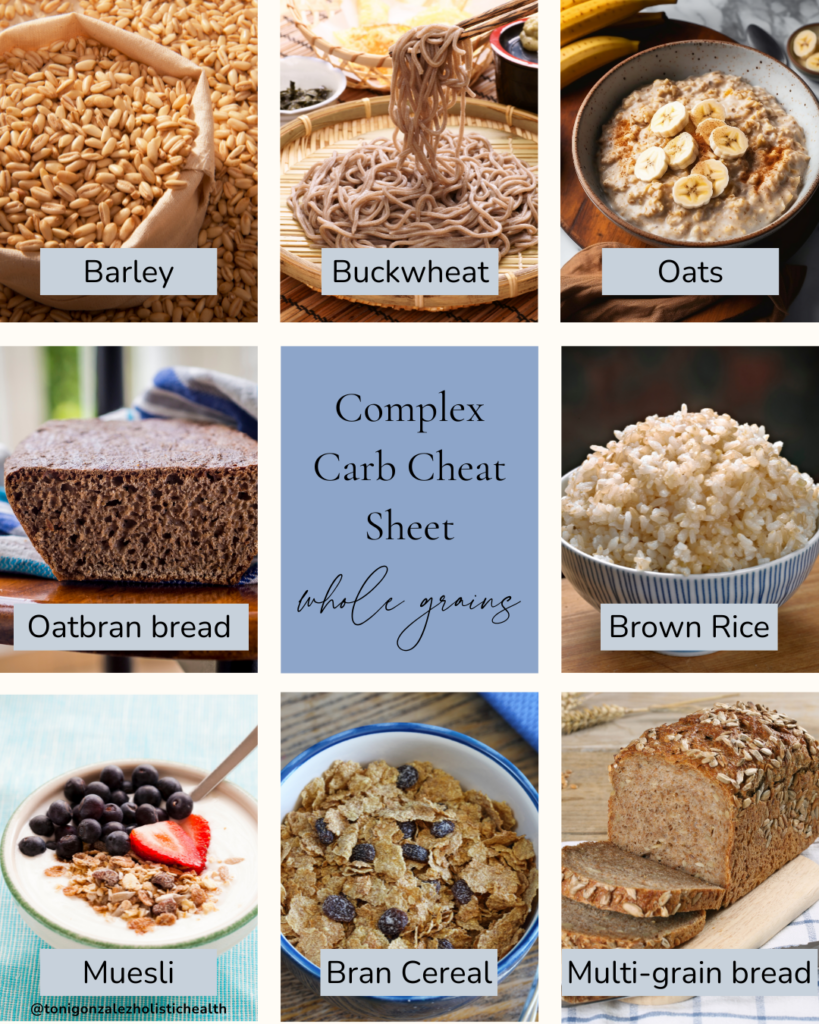
Why I Recommend Complex Carbs for Sustained Energy and Hormone Health
For women in perimenopause or midlife, complex carbs are particularly beneficial. They help keep your blood sugar stable, which supports hormonal balance, reduces energy crashes, and helps with mood regulation.
How to Balance Both Simple and Complex Carbs in Your Diet
It’s all about balance and making sure your body is getting the fuel it needs without feeling deprived. Here’s how to do it:
Before and after a workout:
A mix of simple and complex carbs can give you quick energy when you need it, while also providing the sustained fuel your muscles need to recover.
• Example: A banana with peanut butter or a handful of dried fruit and nuts.
At breakfast:
Start your day with complex carbs to avoid mid-morning crashes.
• Example: Oatmeal with chia seeds, topped with berries.
For lunch and dinner:
Incorporate complex carbs like whole grains or starchy vegetables to provide energy and keep you satisfied.
• Example: Grilled chicken with quinoa and roasted sweet potatoes.
For snacks:
Mix protein with carbs to keep your energy steady between meals.
• Example: Greek yogurt with fresh fruit or hummus with whole grain crackers.
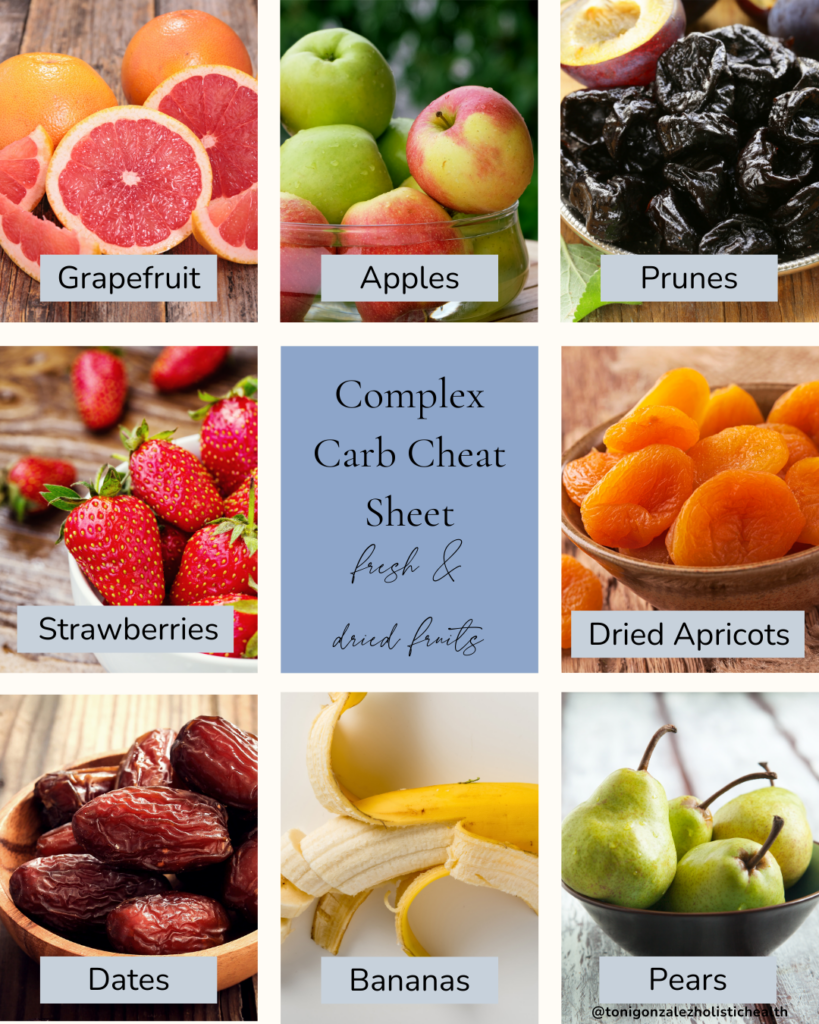
When to Include Simple Carbs Without Guilt
There’s no need to completely avoid simple carbs. You can enjoy them in moderation, especially when paired with protein and fiber to minimize any blood sugar swings. Instead of reaching for processed snacks, try these:
• A few squares of dark chocolate
• Fresh fruit with a dollop of Greek yogurt
• Whole grain toast with a drizzle of honey
Carbs (Best When Paired with Protein):
• Fresh fruits (bananas, apples, berries)
• Dairy (milk, yogurt)
• Honey or maple syrup (in small amounts)
Complex Carbs (Everyday Go-Tos):
• Quinoa, farro, or brown rice
• Whole grain bread and pasta
• Legumes like lentils, chickpeas, and black beans
• Starchy vegetables like sweet potatoes, squash, and carrots
• Oats or high-fiber cereals
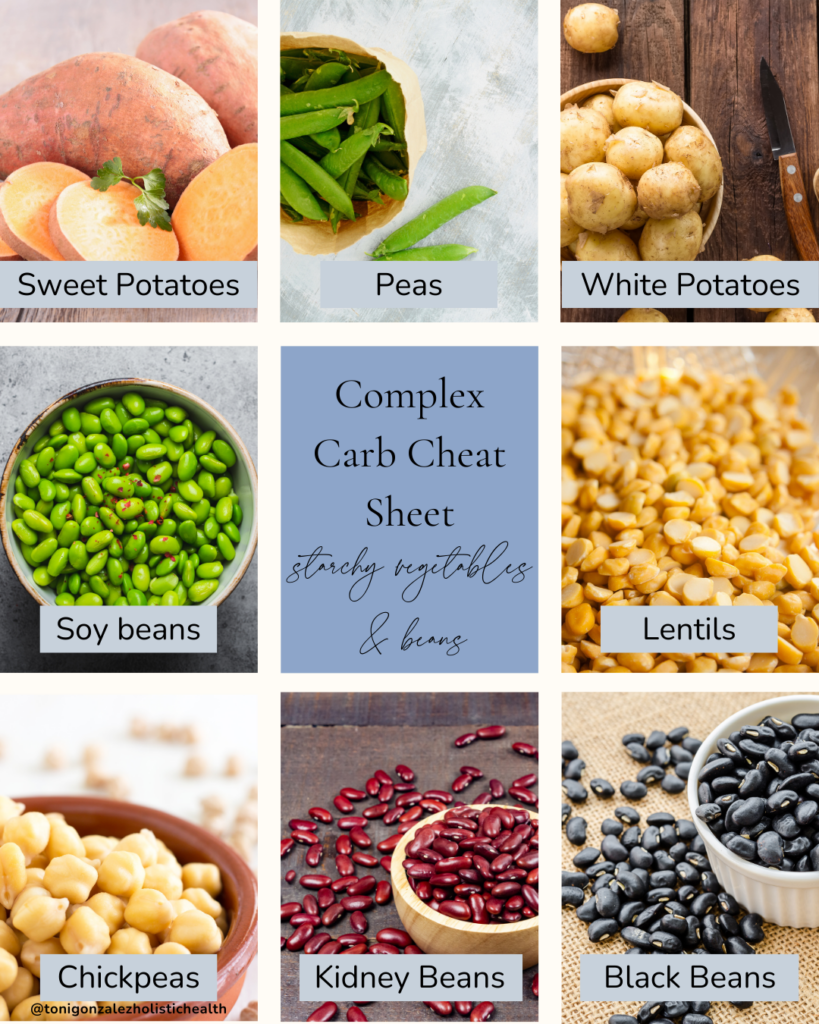
The Bottom Line: Focus on Balance, Not Restriction
It’s easy to think you have to cut out carbs to see results, but the key is balance. Your body needs carbohydrates for energy, brain function, and overall well-being. The real goal is to choose the right kinds of carbs at the right times to support your lifestyle and health goals.
One question I get asked A LOT is…”What about white rice?” White rice is a simple carb, which means, you’ll digest it easily which could cause a spike in your blood sugar levels then crash later…especially if consumed in large quantities.
How do we fix this? Balance the white rice with some protein, vegetables and healthy fats.

If you want more guidance on how to incorporate the right carbs into your diet without feeling overwhelmed or deprived, feel free to reach out. Together, we can create a plan that works for you and your lifestyle.
Do you know how to balance your carbs? Let me know in the comments, or shoot me a message @hello@tonigonzalez.co if you need help!

Be the first to comment